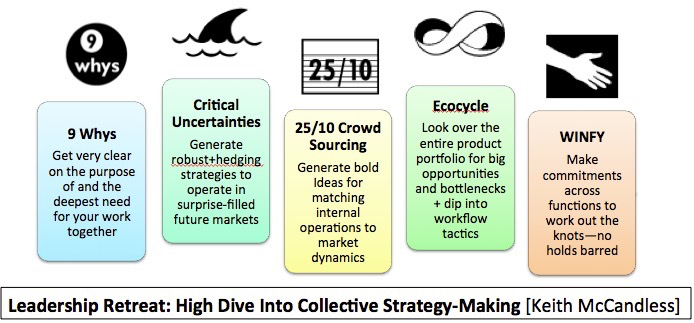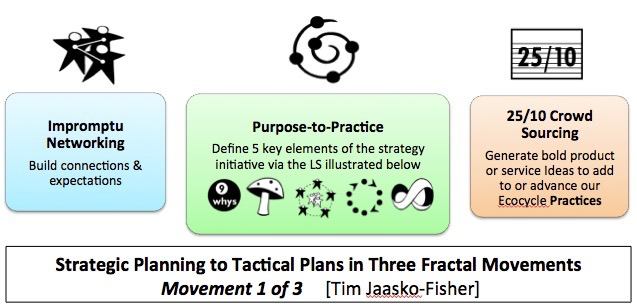 This is the third of four pieces reflecting on the experiences of Emilio, a subject matter expert who was tasked with converting his successful F2F training into an elearning offering. This one focuses on the facilitation aspects of the course! You can find the context in part 1 , and part 2. (Disclaimer: I was an adviser to the project and my condition of participation was the ability to do this series of blog posts, because there is really useful knowledge to share, both within the colleague’s organization and more widely. So I said I’d add the blog reflections – without pay – if I could share them.)
This is the third of four pieces reflecting on the experiences of Emilio, a subject matter expert who was tasked with converting his successful F2F training into an elearning offering. This one focuses on the facilitation aspects of the course! You can find the context in part 1 , and part 2. (Disclaimer: I was an adviser to the project and my condition of participation was the ability to do this series of blog posts, because there is really useful knowledge to share, both within the colleague’s organization and more widely. So I said I’d add the blog reflections – without pay – if I could share them.)
I want to kick this off with a quote from the amazing Beck Tench talking about facilitating online learning:
Learning and change are super complex. Consider we may never know the effects of our work. Every snapshot lacks context in some way. Proceed with listening, kindness, observation, and experimentation. Accept that there will be uncertainty, as in all things, and move forward anyway.
I love this quote because it reminds us that facilitating online learning is about the teacher’s expertise. And about engagement. And about our stance as an online facilitator – something I think is often invisible or ignored. Emilio stepped into that stance with a lot of grace, tolerance for the unknown and comfort with trying, learning, and even with a little failure. In my experience this is not that common!
Nancy: Let’s talk a bit about stepping into reality, the launch of the course. This was your first time facilitating an online learning course. What happened?
Emilio: The beginning was very stressful. There was a moment where I had to reset my vision that I had created at the beginning of this project. We thought we had everything planned by the Thursday before the course. We were prepared to send a message out to the people who had signed up for the course, expecting them to register on the actual Moodle site, and begin surfing the site and get fully on board on the first Monday of the course.
Then our partner failed to send us the list of participants in time and we had to postpone the launch. Once we got the list, we sent the welcome message on a Thursday. And yet by Monday people had not surfed the website and registered. I had to say, “wait wait, convince yourself, just don’t get frustrated.” This is what we were paying for: a pilot to experience everything, anything that can go wrong. It is better to experience it now. Next time we will do it better. That will be the real start.
This process takes a little bit of emotional intelligence. You can’t lose your focus. You have to learn in the experience. Don’t focus on the idea that this is the official worldwide launch of your elearning program, but a learning experience. So it was not a big deal. Just a couple of hours of freaking out.
Nancy: Now that you have had the experience what reflections do you have about moving and facilitating your successful F2F course? How did you engage people?
Emilio: Other than wanting to respond more quickly? (Laughter: Emilio was amazing – he was not only teaching online for the first time, but he was doing it WHILE he was on the road for work!) Here are some of my lessons.
First, what should I do about participants that belong to a group not responding to each other? I see the first person in that group posts and gets no response. I wondered, should I intervene? I wondered about how to group participants in some way, to point out some challenges and invite others to react. But I didn’t hoping they would eventually engage. There were two groups where no one commented at all. If I were to do it again I would immediately ask others to post something.
Nancy: There are more experiments with gamification in online, where, for example, you get points towards badges for responses. I’m not always sure of the long term benefit of these kinds of incentives and if they actually support the learning, but they appear to get people engaged in the moment. Maybe it can trigger learner socialization quicker and be something useful to explore. Because as you noted, participation in the design of this course assumes people will interact with each other. So socialization of the group is the first step towards that participation, and later is essential for successful group work.
Emilio: Second, I can teach from anywhere. I could see that in our pilot. I was travelling like crazy. Another take away is the real leverage of technology. I could be doing different things in different places in the world and still deliver a course. You see people are learning from anywhere. If you compare that to level of effort for a F2F course, it is a trade off. But the value is there and you as an officer, can become much more productive. Once you invest in the up front work of design and planning, which was more than I expected.
There are some challenges to this anytime/anywhere though! I feel a bit guilty. I could have done a better job dedicating a bit more time overall. Once I woke up I did not realize the time difference in the office hours and had to wake up at 3am. There are a couple of times I knew I was responding two days later. I know that shouldn’t happen, how I wanted it to be. I wanted to respond within 24 hours.
Emilio: Third, include a synchronous element. The most effective tool I feel I had was our weekly synchronous “Office Hours.” They gave me an opportunity to introduce a dose of F2F interaction which is fantastic.
During the office hours I got a chance to interact with the participants. They would post several questions. The sharing the screen was super critical. I surfed and took them where we wanted to go, to a question related to a graph or slide and explain it. You can sense by the comments – “oh yes, thank you this clarifies a lot.” We quickly solved problems.
Also, just by hearing their questions I could pinpoint those slides where the message may not be that clear and I would edit a couple of things right away. So it helped me get clearer as well.
We tried to record and post the recordings for those who could not attend due to work or time zones, but we had some technical problems. We will try and fix that next time. But I will also really encourage the participants to attend, because it brings the passion for the subject matter and the collegiality which is needed for the group work and active participation. The people who attended office hours were also the people who completed the course!
Some ideas for next time is to expand the use of office hours to help better set up the groups and the process for the group work. Maybe teams could have a private chat or meeting once a week and I could use some questions to help them get to know each other in the context of the course. That leads to my fourth learning: group work requires building relationships. Our group exercises need to be reconsidered (design) and I need to figure out how to get people comfortable enough with each other to actually engage in the group work.
Nancy: Yes, that is really hard, particularly when the participants have allocated an hour a day for three weeks and there is a lot of material to cover!
Emilio: Fifth, don’t do this alone! Milica was my assistant and she was always there. One time I could not log into the office hours and Melicia took care of it. In hindsight, we should have included her earlier in the facilitation conversations and planning. Part of the team. You and the other consultants Cheryl, Terri and everyone were very helpful.
Nancy: What was the facilitation highlight for you?
Emilio: The first and second Office Hours were critical. The course was mostly asynchronous. I knew people were coming in. I logged in and I saw people logging in and that made it real. There are people there! They had interest, and were asking questions, actually reading the slides. I could see the numbers (page views). But until you talk to them, see them asking questions, it is hard to see if they really are reading the material. When we held our weekly synchronous Office Hours, this became much more real.
Nancy: So would you keep doing this?
Emilio: Absolutely yes, I’ll keep doing this. Reflecting on it now, and putting into perspective from an administration standpoint, what I produced during those four weeks of the course, there is an increase in efficiency. I delivered a course – granted for 7 people – but while I was working Bangkok, Mexico and then Peru. Pretty impressive. Amazing, yeah. I had good connectivity fortunately.
Up Next: Reflections from the whole team









 For the last 6 years we (Michelle and Nancy) have been leading introductory workshops on graphic facilitation, the use of visuals in group process. We’ve grounded the workshops in basic drawing “liberation” (I CAN DRAW), dipped into graphic recording and finished with examples of visual practices in group process. Last year Michelle took that on solo and will lead
For the last 6 years we (Michelle and Nancy) have been leading introductory workshops on graphic facilitation, the use of visuals in group process. We’ve grounded the workshops in basic drawing “liberation” (I CAN DRAW), dipped into graphic recording and finished with examples of visual practices in group process. Last year Michelle took that on solo and will lead 















